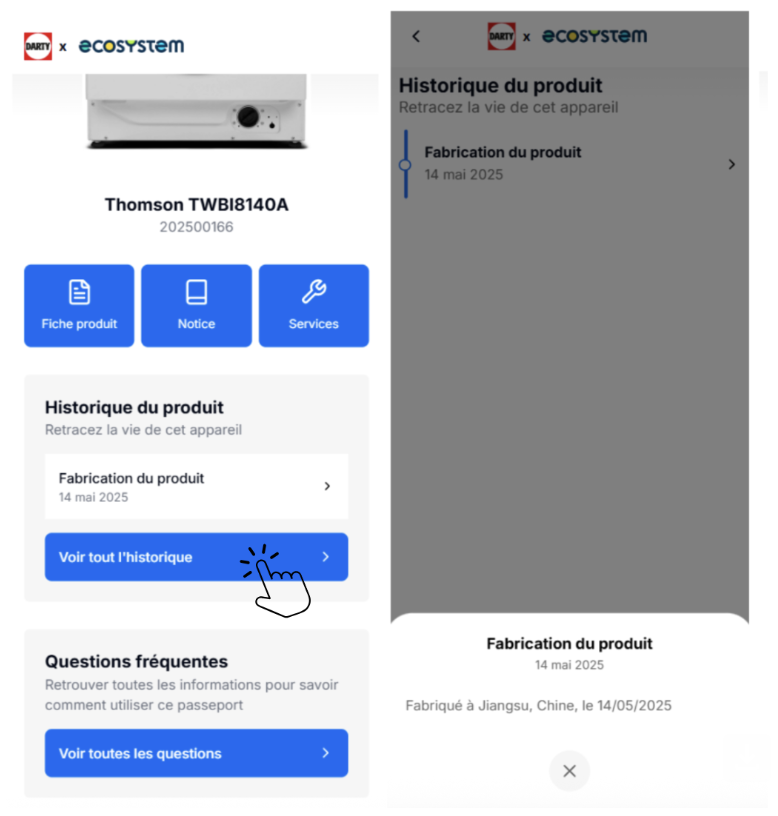What if every product had its own digital identity — from the moment it leaves the factory? That’s exactly what the project has achieved. As of May 2025, the very first Digital Product Passports are being generated directly on the production line.
This marks a critical evolution: while initially driven by pragmatic reasons — focusing on volume and usage to quickly demonstrate value — product traceability is now shifting upstream, starting directly at the point of production.
What Changed? DPPs Now Created in Factories
Digital Product Passports are now created during manufacturing for selected Thomson appliances built for Fnac Darty in China. Over 150 models are already covered.
Each product is now issued with a passport the moment it’s made — capturing:
- Serial number
- Model and factory ID
- Production date and location
And a newly logged event: 📍Manufacturing — timestamped and immutable
This event becomes the very first entry in the product’s digital lifecycle.

This is made possible through direct integration with the factories' production systems. The data is pulled automatically, ensuring high reliability, consistency, and no disruption to existing manufacturing processes.
By introducing this upstream milestone, DPPs become more precise, more scalable, and fully aligned with the realities of industrial production — laying the foundation for richer transparency as the project evolves.
Why It Matters for Circularity and Compliance
By embedding digital identity at the source, manufacturers and retailers can:
- Ensure data accuracy from day one
- Simplify downstream traceability for repairs, resale, and recycling
- Prepare for upcoming EU regulations (like the ESPR)
- Build consumer trust in refurbished and second-hand goods
This shift moves DPPs from a nice-to-have into a critical tool for product lifecycle management, compliance, and transparency.
What’s the Benefit for the End Customer?
With DPPs initiated at the factory:
- Consumers get verified data on their product’s origin
- Resellers have clear proof of authenticity and quality
- Repair services can access accurate specs and usage history
This is a foundational step toward a fully circular economy — where every appliance has a verifiable story, not just a label.
👀 See a Live DPP Example
Scan the QR code below to see what a factory-issued Digital Product Passport looks like.

This article is part of a broader initiative launched by Ecosystem, Fnac Darty and Arianee to implement Digital Product Passports (DPPs) across the entire appliance lifecycle — from factory floor to second-hand shelves. Learn more in our latest project update by subscribing to our newsletter here.

.png)
.png)

.png)